Framework of Emergency Response System for Potential Large-Scale Landslide in Taiwan
Abstract
:1. Introduction
2. Hazard Mapping for Large-Scale Landslide Disasters
2.1. Disasters Caused by Large-Scale Landslides
2.2. Effected Area of Large-Scale Landslide
3. Pre-Warning System for Large-Scale Landslide Disasters
3.1. The Occurrence Mechanism of Large-Scale Landslides
3.2. Establishment of Rainfall Warning Threshold for Large-Scale Landslide
3.2.1. Landslide Cases Collation
3.2.2. Landslide Rainfall Analysis Methods
- Rainfall during landslide, R:There are several ways to calculate rainfall including rainfall peak, average rainfall intensity, and accumulated rainfall. Based on the research of Tsai et al. [29], Kuo et al. [27], and Yu [32], most of the large-scale landslides happened after rainfall peak and were significantly related to accumulated rainfall. Rainfall peak and average rainfall intensity have little connection to the occurrence of the large-scale landslides. Hence, accumulated rainfall was used for analysis in this study. Regarding the calculation method of rainfall events, this study deployed effective cumulative rainfall calculations, where effective cumulative rainfall included event rainfall (Ro) and prior rainfall (Ri). The event rainfall (Ro) was taken from 24-h rainfall before the landslide occurrence. If the rainfall lasted for more than 24 h, the rainfall exceeding 24 h was defined as the prior rainfall (Ri), and the calculation of the prior rainfall required consideration of a period of 7 days (144 h). For cases where the time of occurrence was already known, the effective accumulated rainfall was taken as the rainfall corresponding to that incident. In cases where only the occurrence of an event was known, the maximum effective accumulated rainfall of the event was taken as the representative rainfall.
- Depth of landslide, D:The depth of landslide was calculated with the volume (V) and area (A) of the landslide (Equation (2)). There are various papers discussing the formula for volume and depth estimation of landslides [33,34]. Considering the localized conditions in Taiwan, Water Resources Planning Institute [35], Tseng et al. [36] had proposed modified formulae which were collected and compared by the Soil and Water Conservation Bureau [37]. The formula used in this study was adopted from the research conducted by the Soils and Water Conservation Bureau (Equation (3)).
- The gradient of the slope where the landslide is located, θ:As the slope of a landslide may have multiple gradients, the averaged gradient within the landslide area was utilized. This research used the Zonal Statistics function of the spatial analysis module of ArcGIS software for calculations.
- Equivalent friction angle, Φ:Scheidegger [38] mentioned that the relationship between the equivalent friction coefficient (f) and the landslide volume (V) could be expressed as Formula (4). The relationship between equivalent friction coefficient (f) and equivalent friction angle (Φ) is shown as Formula (5). By using Formula (2), indicating the relationship between the projected landslide area (A) and the landslide volume (V), the equivalent friction angle (Φ) could be derived.
3.2.3. Establishment of Critical Rainfall for Large-Scale Landslide Occurrence
3.2.4. Establishing Rainfall Warning Threshold Value for Large-Scale Landslide Occurrence
4. Results and Discussion
4.1. Results
4.2. Discussion
4.2.1. Feasibility Assessment for Emergency Response System
- Type 1: Those that overlap with existing debris flow protected targets.The responsive preparedness method should continue the existing debris flow preparedness operations, giving due reference to the results of the large-scale landslide impact area designations and updating the existing evacuation procedures. When issuing alerts, they should be announced in conjunction with the existing debris flow contingency mechanisms and evacuations issued with reference to the current red-yellow warning system for debris flow.
- Type 2: Those that have no overlap with the existing debris flow protected targets.In response efforts, reference should be made to the results of the large-scale landslide impact area to increase the warning zone scope and develop new evacuation procedures. Warnings should be issued based on rainfall or other observational data, and on-site evacuation mechanisms should be established.
4.2.2. Acceptability Assessments for Emergency Response System
5. Conclusions
Author Contributions
Funding
Institutional Review Board Statement
Informed Consent Statement
Data Availability Statement
Acknowledgments
Conflicts of Interest
References
- Chigira, M.; Matsushi, Y.; Tsou, C.Y.; Hiraishi, N.; Matsuzawa, M.; Matsuura, S. Deep-seated Catastrophic Landslides Induced by Typhoon 1112 (Talas). Annu. Disaster Prev. Res. Inst. Kyoto Univ. 2012, 5, 193–212. [Google Scholar]
- Haugerud, R.A. Preliminary Interpretation of Pre-2014 Landslide Deposits in the Vicinity of Oso, Washington; Open-File Report; US Geological Survey: Reston, VA, USA, 2014. [CrossRef] [Green Version]
- Shieh, C.-L.; Wang, C.-M.; Chen, Y.-S.; Tsai, Y.-J.; Tseng, W.-H. An Overview of Disasters Resulted from Typhoon Morakot in Taiwan. J. Disaster Res. 2010, 5, 236–244. [Google Scholar] [CrossRef]
- Chen, Y.S.; Kuo, Y.S.; Lai, W.C.; Tsai, Y.J.; Lee, S.P.; Chen, K.T.; Shieh, C.L. Reflection of typhoon Morakot - the challenge of compound disaster simulation. J. Mt. Sci. 2011, 8, 571–581. [Google Scholar] [CrossRef]
- Lee, C.T.; Dong, J.J.; Lin, M.L. Geological Investigation on the Catastrophic Landslide in Hsiaolin Village, Southern Taiwan. Sino-Geotech. 2010, 122, 87–94. [Google Scholar]
- Fan, J.C.; Liou, Y.C. Slope Disasters and Mechanism in Chishan River Basin. Sino-Geotech. 2010, 122, 21–30. [Google Scholar]
- Tang, C.L.; Hu, J.C.; Lo, C.M.; Lin, M.L. The Catastrophic 1999 Tsaoling and 2009 Hsiaoling Landslides: Preliminary Study from 3-D Distinct Element Modeling. Sino-Geotech. 2010, 122, 143–152. [Google Scholar]
- Chen, S.C.; Hsu, C.L. Landslide Dams Induced by Typhoon Morakot and Its Risk Assessment. Sino-Geotech. 2010, 122, 77–86. [Google Scholar]
- Kambara, J.; Uchida, T. Technical Guideline for Countermeasures against Deep-Seated Catastrophic (Rapid) Landslide; National Institute for Land and Infrastructure Management, Ministry of Land, Infrastructure, Transport and Tourism: Tsukuba, Japan, 2014. (In Japanese)
- U.S. House. H.R. 8810, National Landslide Preparedness Act; 116th Congress, 2nd Session; Government Printing Office: Washington, DC, USA, 2021.
- Soil and Water Conservation Bureau. Large-Scale Landslide Disaster Prevention and Mitigation under Climate Change; Soil and Water Conservation Bureau, Council of Agriculture, Executive Yuan: Nantou, Taiwan, 2016. (In Chinese)
- Lin, C.W.; Yi, D.C.; Huang, M.L. Digital terrain from airborne LiDAR—an effective tool for seeking potential large-scale landslides. Geo Topic 2012, 31, 44–48. [Google Scholar]
- Lin, M.-L.; Chen, T.-W.; Lin, C.-W.; Ho, D.-J.; Cheng, K.-P.; Yin, H.-Y.; Chen, M.-C. Detecting Large-Scale Landslides Using Lidar Data and Aerial Photos in the Namasha-Liuoguey Area, Taiwan. Remote Sens. 2013, 6, 42–63. [Google Scholar] [CrossRef] [Green Version]
- Lin, C.-W.; Tseng, C.-M.; Tseng, Y.-H.; Fei, L.-Y.; Hsieh, Y.-C.; Tarolli, P. Recognition of large scale deep-seated landslides in forest areas of Taiwan using high resolution topography. J. Asian Earth Sci. 2013, 62, 389–400. [Google Scholar] [CrossRef]
- Chen, R.-F.; Lee, C.-Y.; Yin, H.-Y.; Huang, H.-Y.; Cheng, K.-P.; Lin, C.-W. Monitoring the Deep-Seated Landslides by Using ALOS/PALSAR Satellite Imagery in the Disaster Area of 2009 Typhoon Morakot, Taiwan. In Advancing Culture of Living with Landslides; Springer International Publishing: Cham, Switzerland, 2017; pp. 239–247. [Google Scholar]
- Chen, K.-T.; Chen, T.-C.; Chen, X.-Q.; Chen, H.-Y.; Zhao, W.-Y. An experimental determination of the relationship between the minimum height of landslide dams and the run-out distance of landslides. Landslides 2021, 1–14. [Google Scholar] [CrossRef]
- Guzzetti, F.; Mondini, A.C.; Cardinali, M.; Fiorucci, F.; Santangelo, M.; Chang, K.-T. Landslide inventory maps: New tools for an old problem. Earth-Sci. Rev. 2012, 112, 42–66. [Google Scholar] [CrossRef] [Green Version]
- Tsai, Y.-J.; Lai, W.-C.; Hsu, T.-C.; Shieh, C.-L.; Huang, H.-Y.; Mikos, M.; Tiwari, B.; Yin, Y.; Sassa, K. Rainfall-Induced Large-Scale Landslide Hazard Zonation in Taiwan. In Advancing Culture of Living with Landslides; Springer International Publishing: Cham, Switzerland, 2017; pp. 719–732. [Google Scholar]
- Hiroshi, I.; Mizuyama, T. Flow and Deposit Properties of Debris Flow; Report of The Public Works Research Institute; Ministry of Construction: Ibaraki, Japan, 1982; 157, pp. 88–153.
- Kuo, Y.-S.; Tsang, Y.-C.; Chen, K.-T.; Shieh, C.-L. Analysis of landslide dam geometries. J. Mt. Sci. 2011, 8, 544–550. [Google Scholar] [CrossRef]
- Kaneda, H.; Kono, T. Discovery, Controls, and Hazards of Widespread Deep-Seated Gravitational Slope Deformation in the Etsumi Mountains, Central Japan. J. Geophys. Res. Earth Surf. 2017, 122, 2370–2391. [Google Scholar] [CrossRef] [Green Version]
- Saito, M. Forecasting the time of occurrence of a slope failure. In Proceedings of the 6th International Conference on Soil Mechanics and Foundation Engineering, Montreal, Canada, 8–15 September; 1965; pp. 537–541. [Google Scholar]
- Intrieri, E.; Carlà, T.; Gigli, G. Forecasting the time of failure of landslides at slope-scale: A literature view. Earth-Sci. Rev. 2019, 193, 333–349. [Google Scholar] [CrossRef]
- Guzzetti, F.; Peruccacci, S.; Rossi, M.; Stark, C.P. Rainfall thresholds for the initiation of landslides in central and southern Europe. Theor. Appl. Clim. 2007, 98, 239–267. [Google Scholar] [CrossRef]
- Martelloni, G.; Segoni, S.; Fanti, R.; Catani, F. Rainfall thresholds for the forecasting of landslide occurrence at regional scale. Landslides 2011, 9, 485–495. [Google Scholar] [CrossRef] [Green Version]
- Zezere, J.L.; Vaz, T.; Pereira, S.S.; Oliveira, S.C.; Marques, R.; Garcia, R.A.C. Rainfall thresholds for landslide activity in Portugal: A state of the art. Environ. Earth Sci. 2015, 73, 2917–2936. [Google Scholar] [CrossRef]
- Kuo, H.-L.; Lin, G.-W.; Chen, C.-W.; Saito, H.; Lin, C.-W.; Chen, H.; Chao, W.-A. Evaluating critical rainfall conditions for large-scale landslides by detecting event times from seismic records. Nat. Hazards Earth Syst. Sci. 2018, 18, 2877–2891. [Google Scholar] [CrossRef] [Green Version]
- Soil and Water Conservation Bureau. Investigation and Delimitation of Potential Large-Scale Landslide Hazard Zonation; Soil and Water Conservation Bureau: Nantou, Taiwan, 2016. (In Chinese)
- Tsai, T.T.; Tsai, Y.J.; Shieh, C.L. Critical Rainfall Analysis of Large-Scale Landslide Occurrence. In Proceedings of the Interpraenent 2018 in the Pacific Rim, Toyama, Japan, 1–4 October 2018. [Google Scholar]
- Barnes, G.E. Response to the book review published in Geotechnique 48, No. 447: G. E. Barnes, Soil mechanics: Principles and practice, Macmillan Press Ltd, 1995, ISBN 0-333-59654-4. Géotechnique 1998, 48, 869. [Google Scholar] [CrossRef]
- Duncan, J.M.; Wright, S.G. Soil Strength and Slope Stability; John Wiley: Hoboken, NJ, USA, 2005; p. 297. [Google Scholar]
- Yu, T.Y. Study on Occurrence Rainfall of Large-Scale Landslide. Master’s Thesis, National Cheng Kung University, Tainan, Taiwan, 2019. [Google Scholar]
- Guzzetti, F.; Ardizzone, F.; Cardinali, M.; Rossi, M.; Valigi, D. Landslide volumes and landslide mobilization rates in Umbria, central Italy. Earth Planet. Sci. Lett. 2009, 279, 222–229. [Google Scholar] [CrossRef]
- Jaboyedoff, M.; Carrea, D.; Derron, M.-H.; Oppikofer, T.; Penna, I.M.; Rudaz, B. A review of methods used to estimate initial landslide failure surface depths and volumes. Eng. Geol. 2020, 267, 105478. [Google Scholar] [CrossRef]
- Water Resources Planning Institute. Under Climate Change in the Sediment Treatment Measures in Southern River Basins—A Case Study Kaoping Watershed; Water Resources Planning Institute of Water Resources Agency; Ministry of Economic Affairs: Taipei, Taiwan, 2010. (In Chinese)
- Tseng, C.M.; Lin, C.W.; Stark, C.P.; Liu, J.K.; Fei, L.Y.; Hsieh, Y.C. Application of a Multi-temporal, LiDAR-derived, Digital Terrain Model in a Landslide-Volume Estimation. Earth Surface Processes Landforms 1587, 38. [Google Scholar] [CrossRef]
- Soil and Water Conservation Bureau. Development and Application of Disaster Prevention and Mitigation Technologies for Large-Scale Landslides; Soil and Water Conservation Bureau: Nantou, Taiwan, 2015. (In Chinese)
- Scheidegger, A.E. On the prediction of the reach and velocity of catastrophic landslides. Rock Mech. Rock Eng. 1973, 5, 231–236. [Google Scholar] [CrossRef]
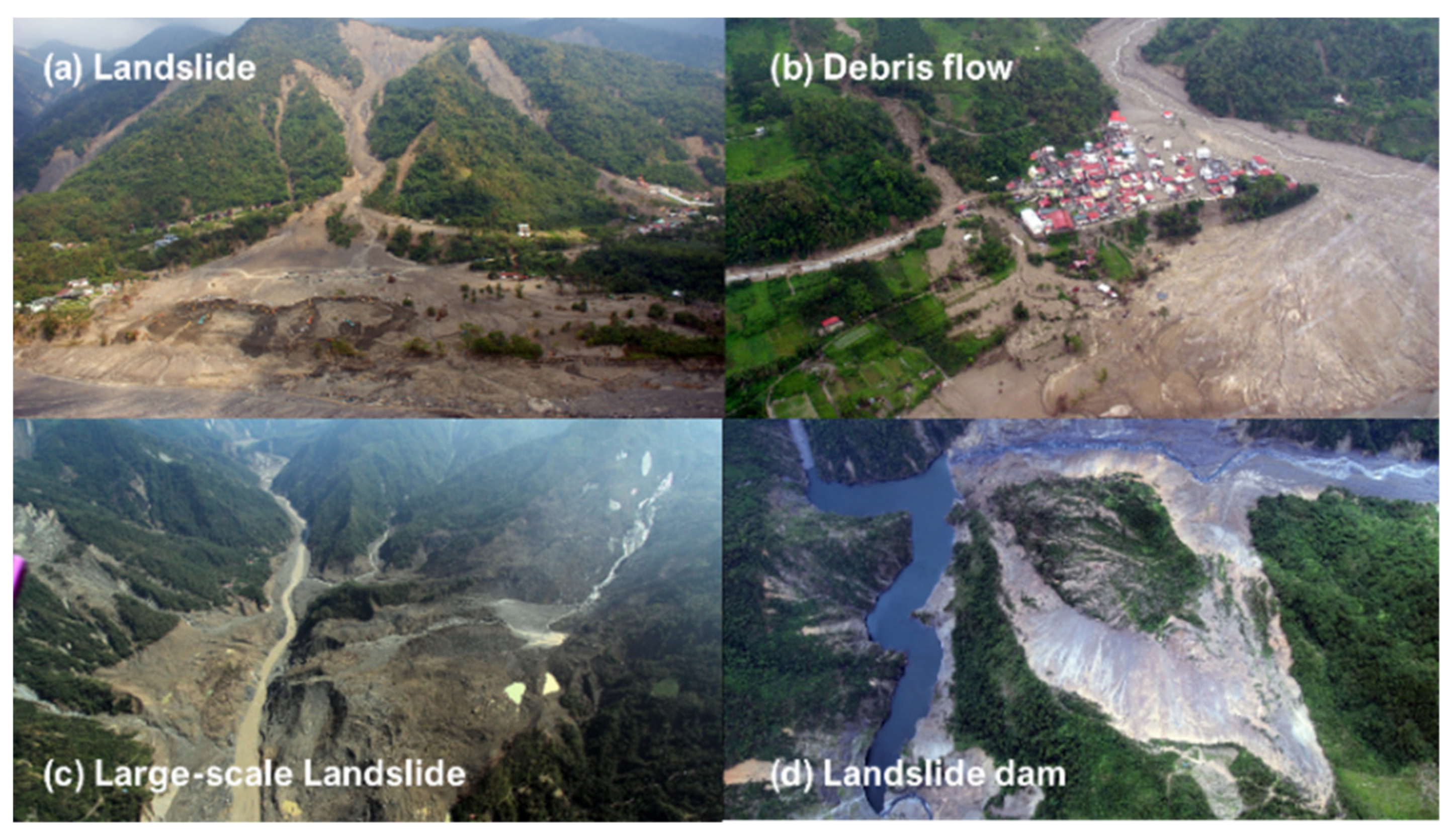
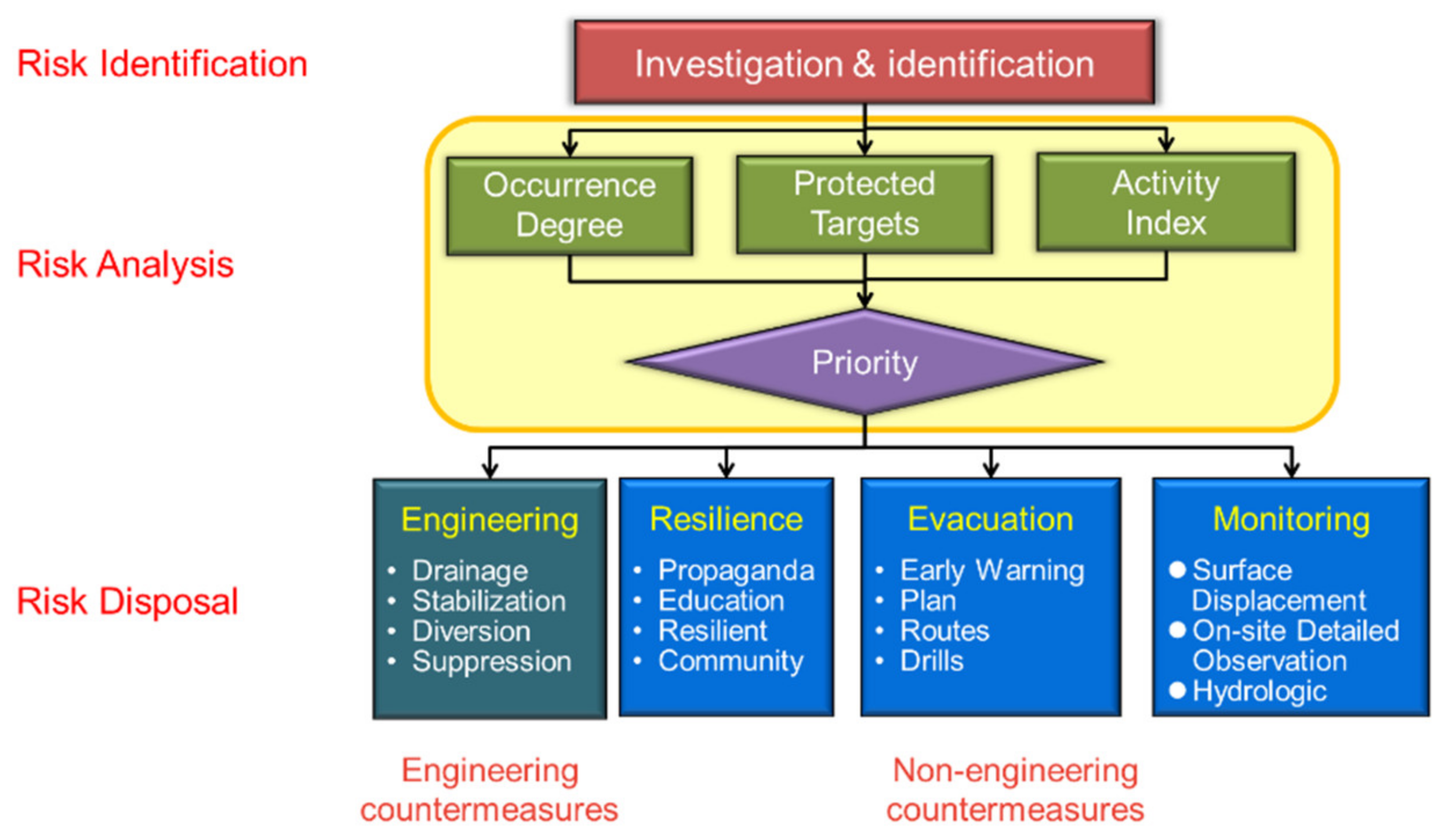
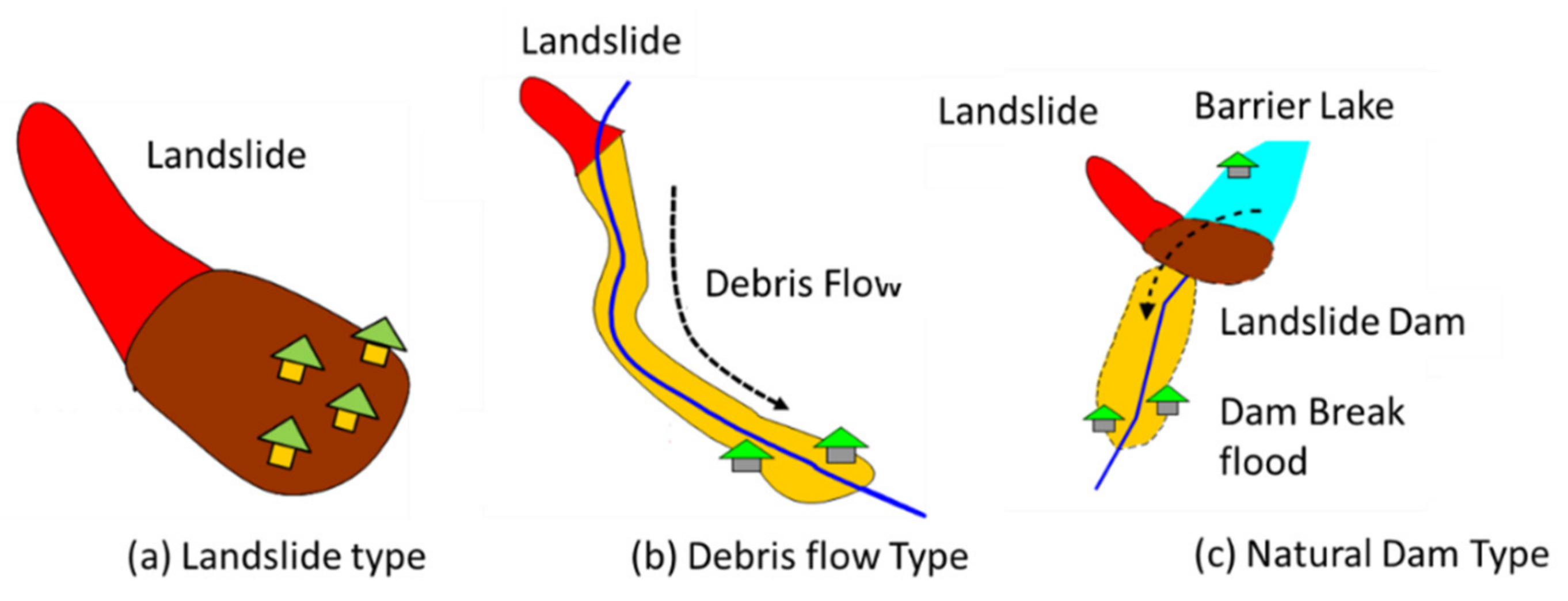
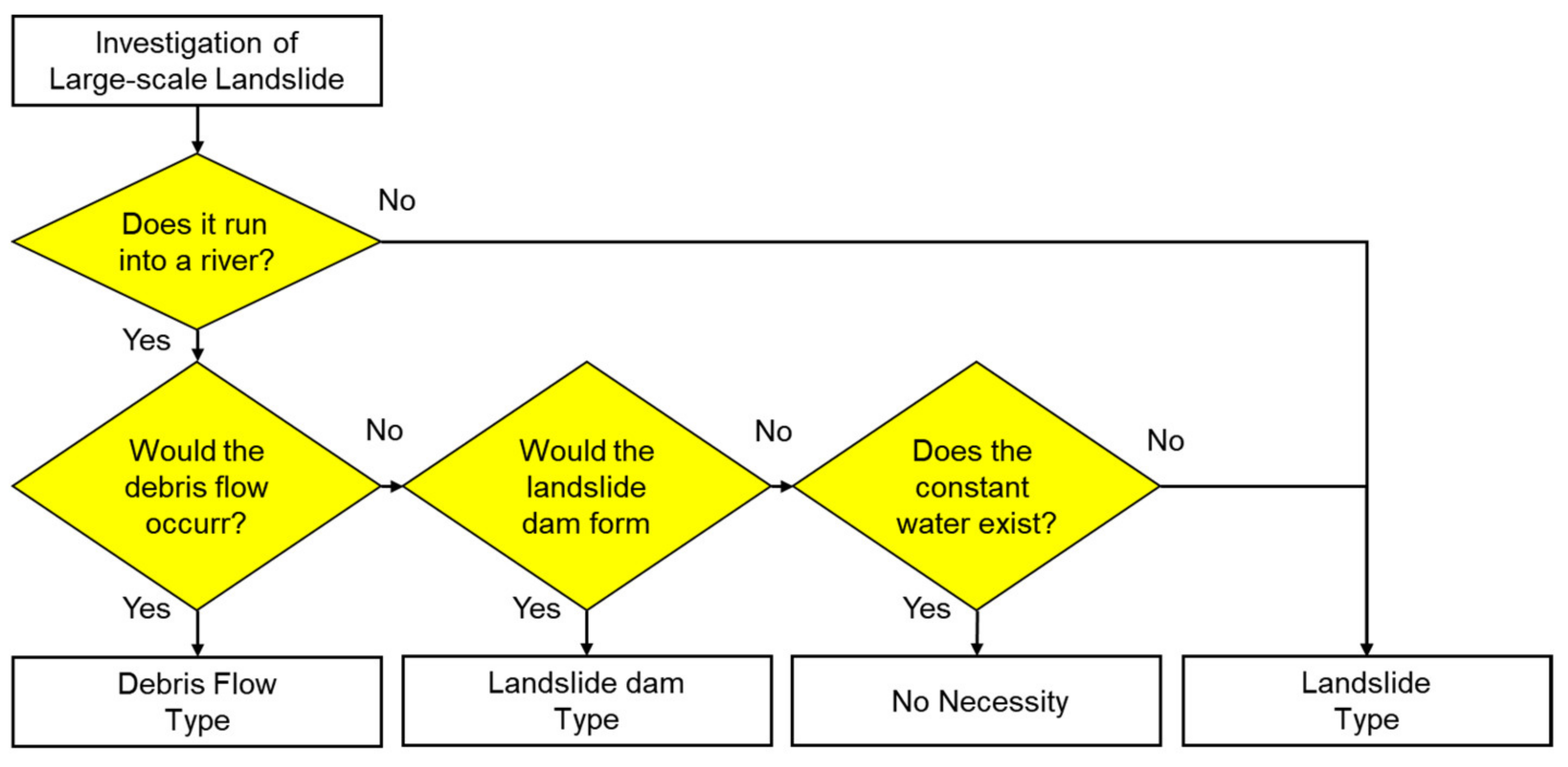
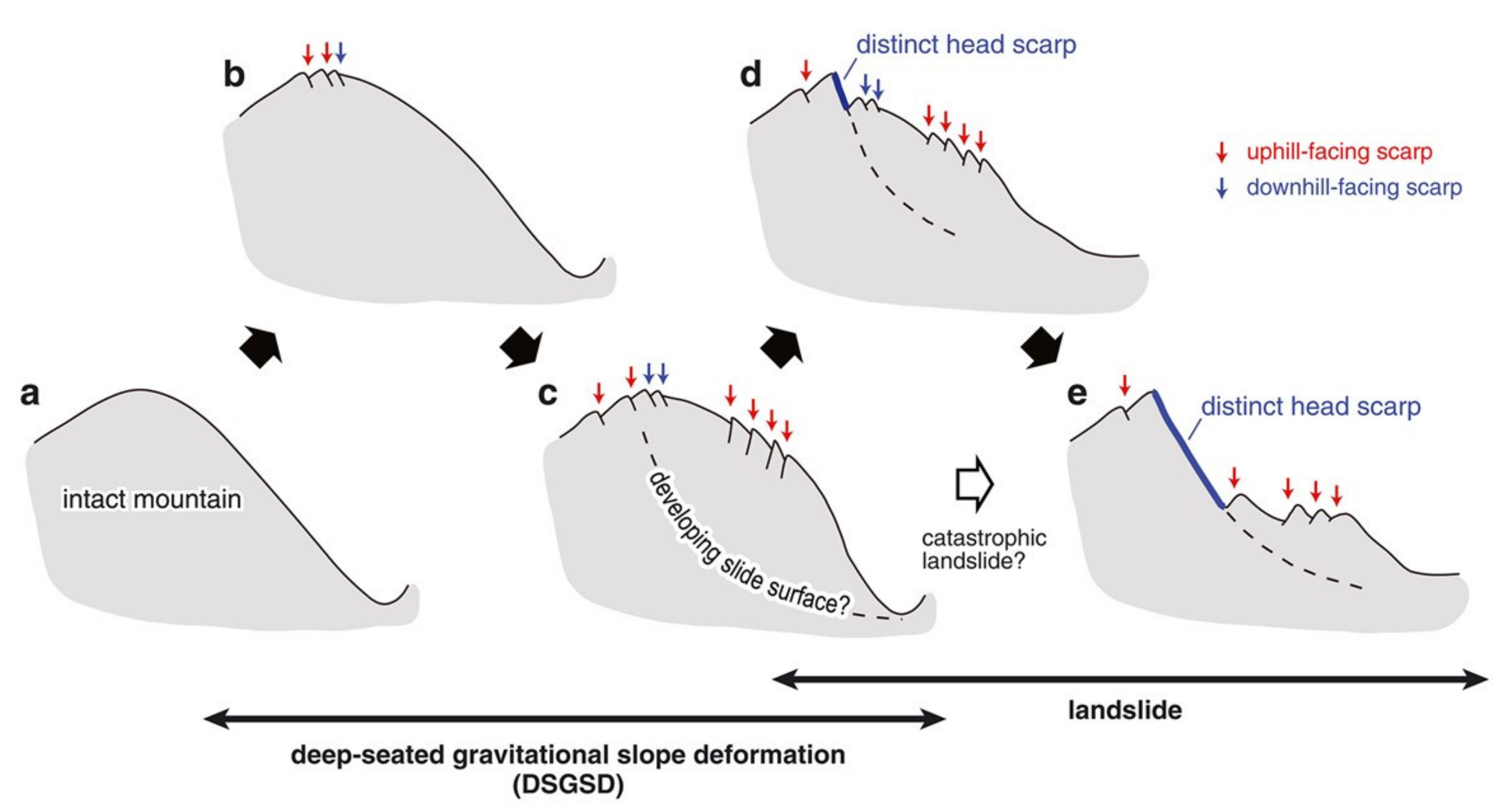

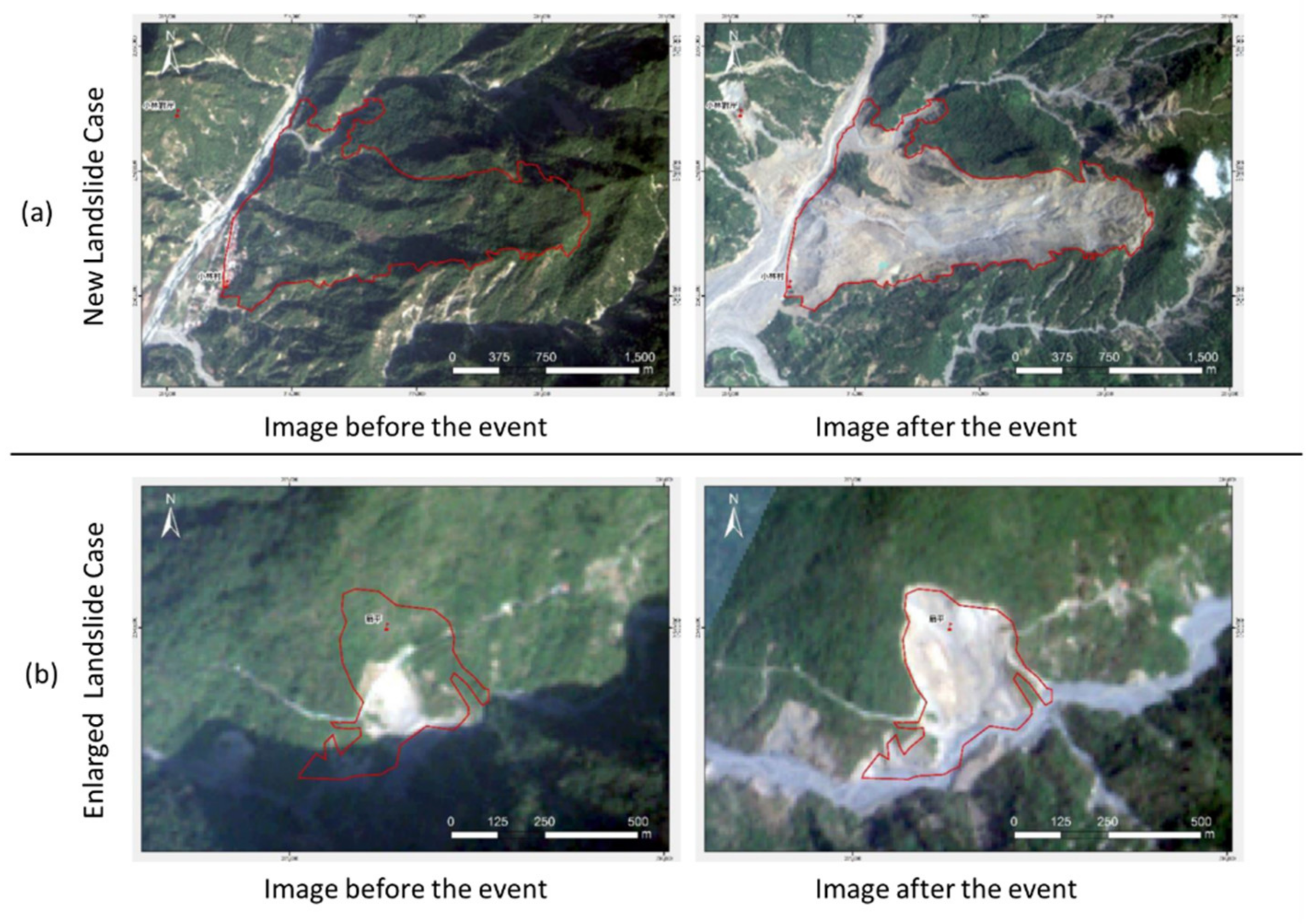
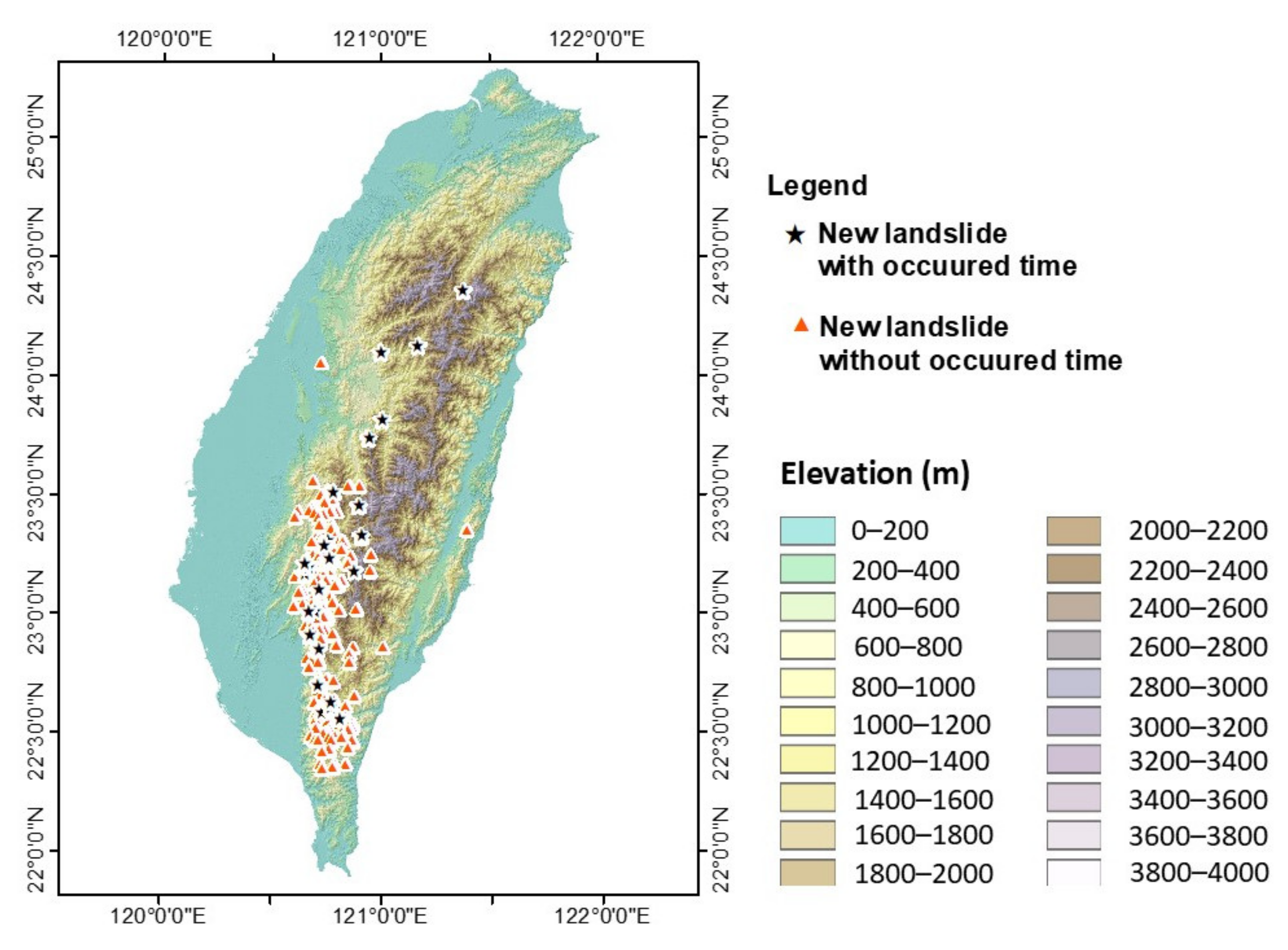
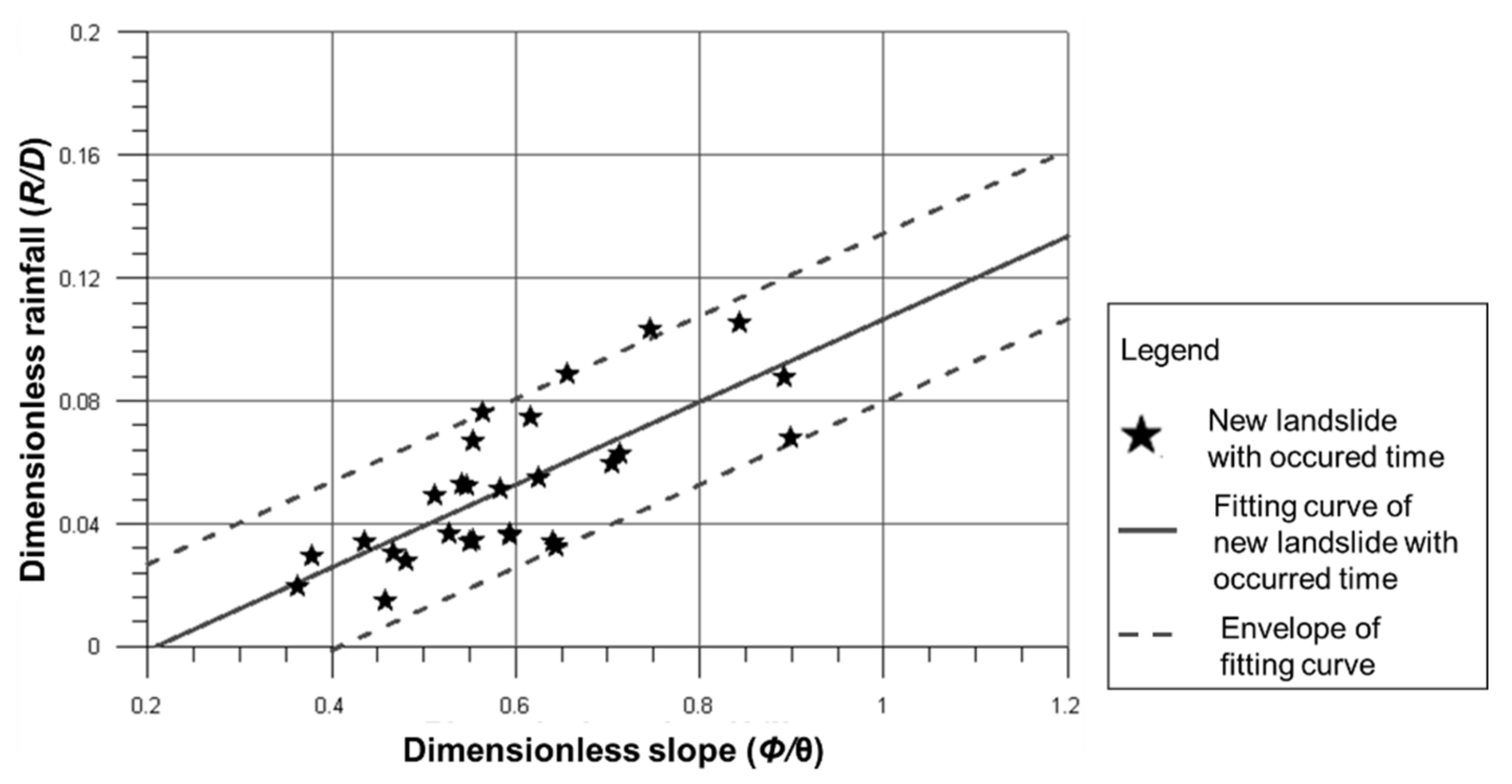
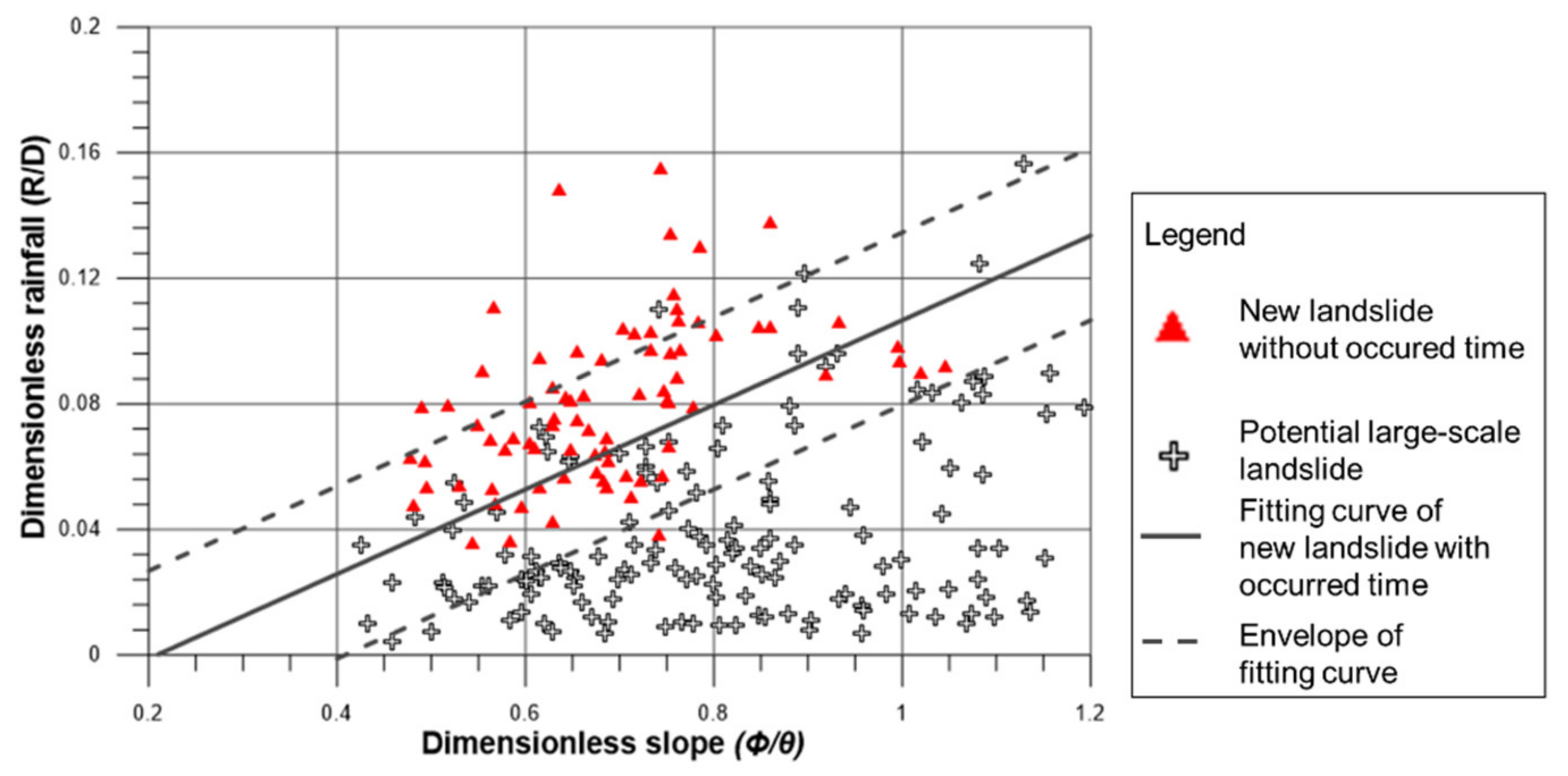
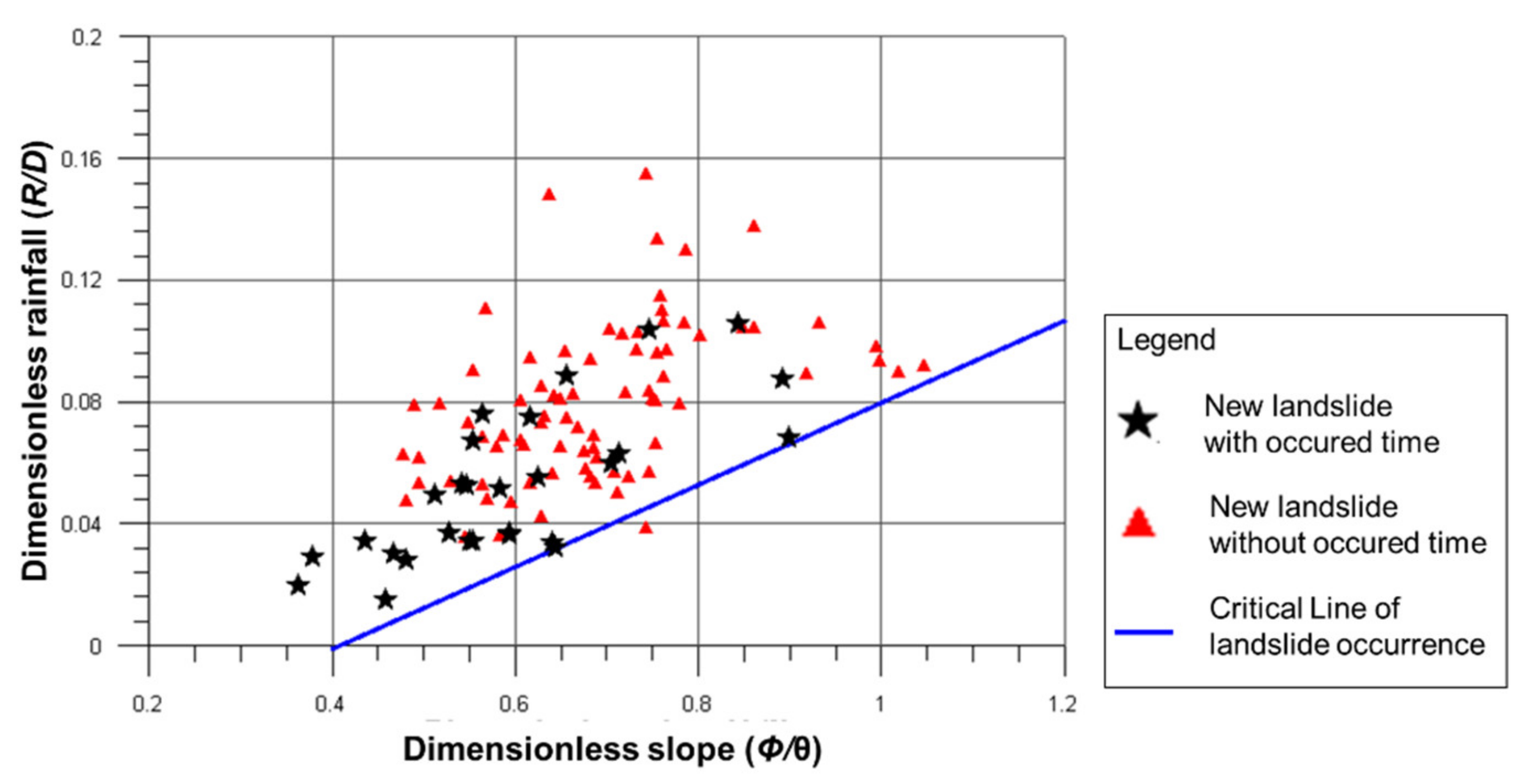
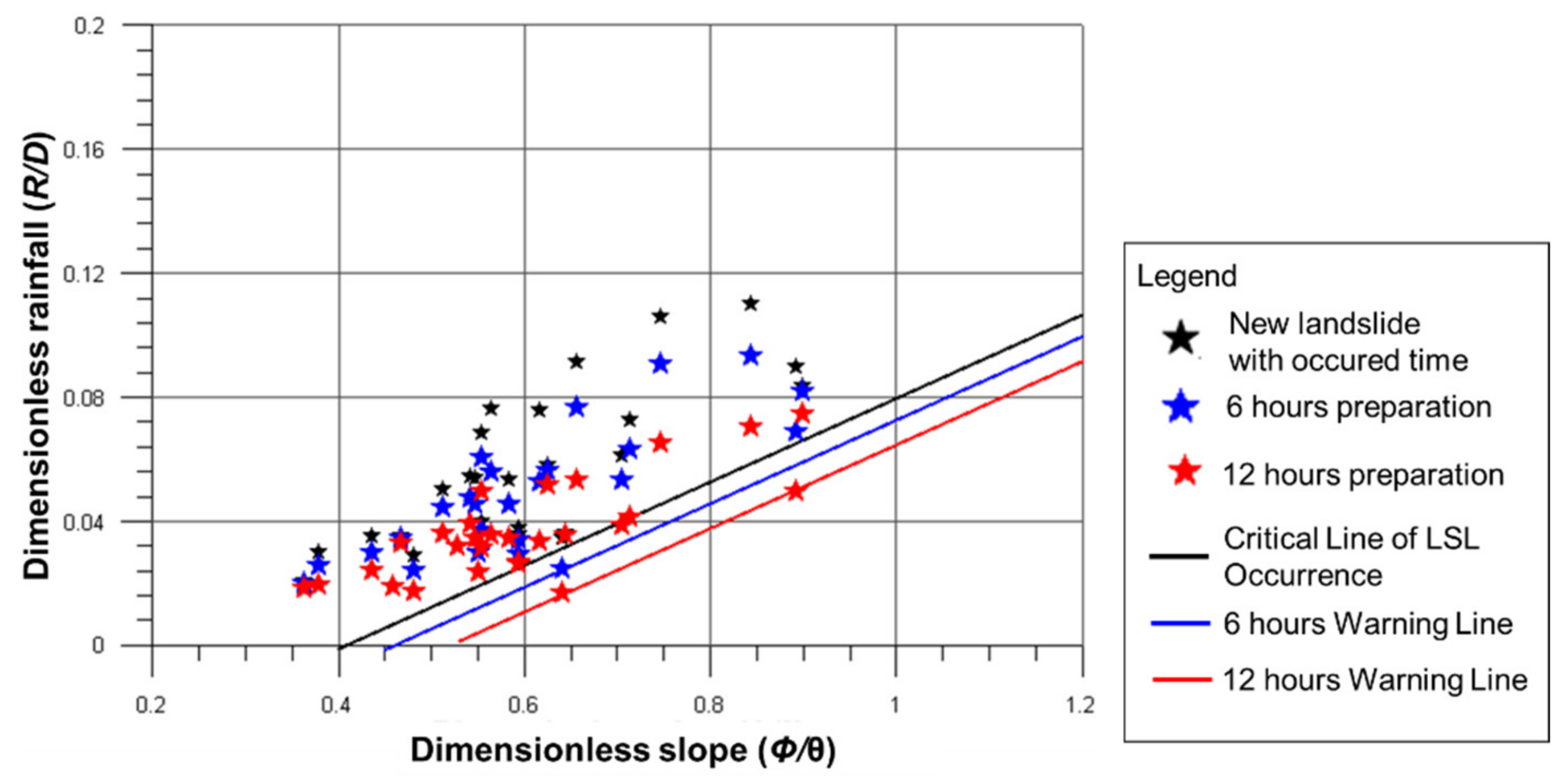
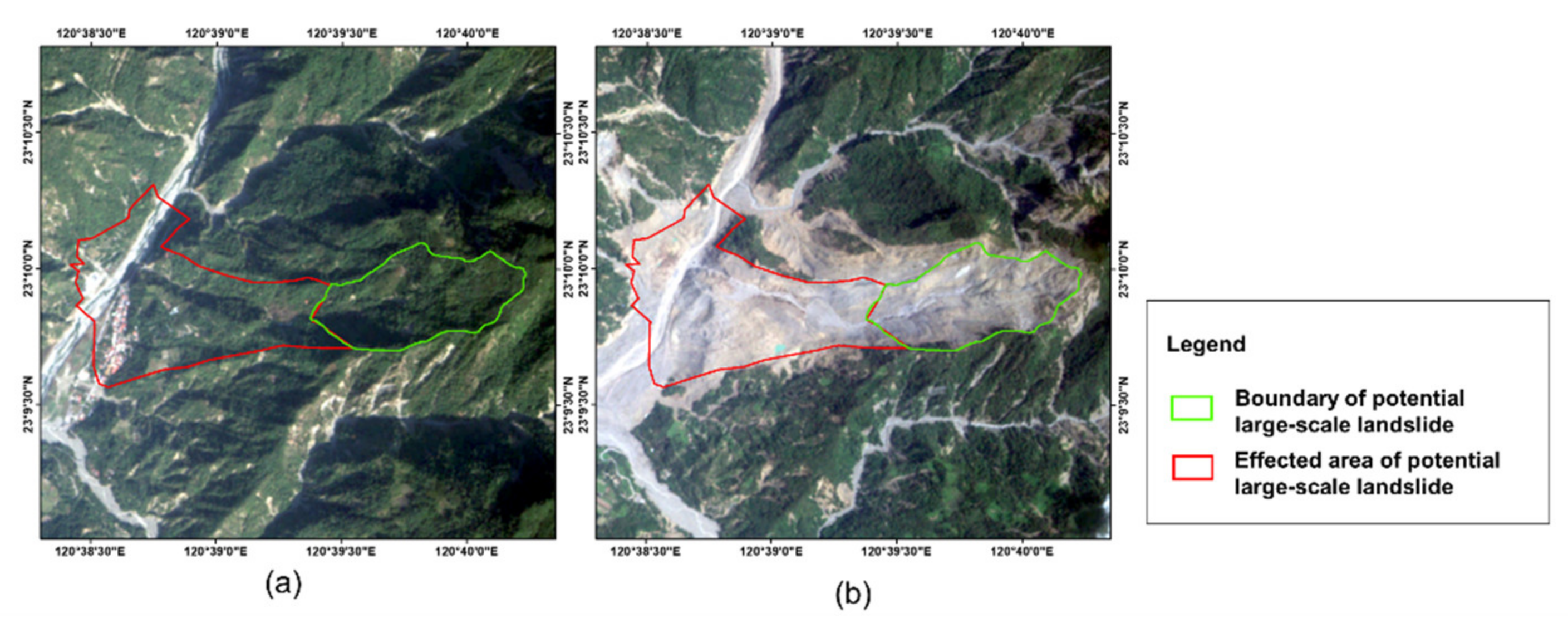
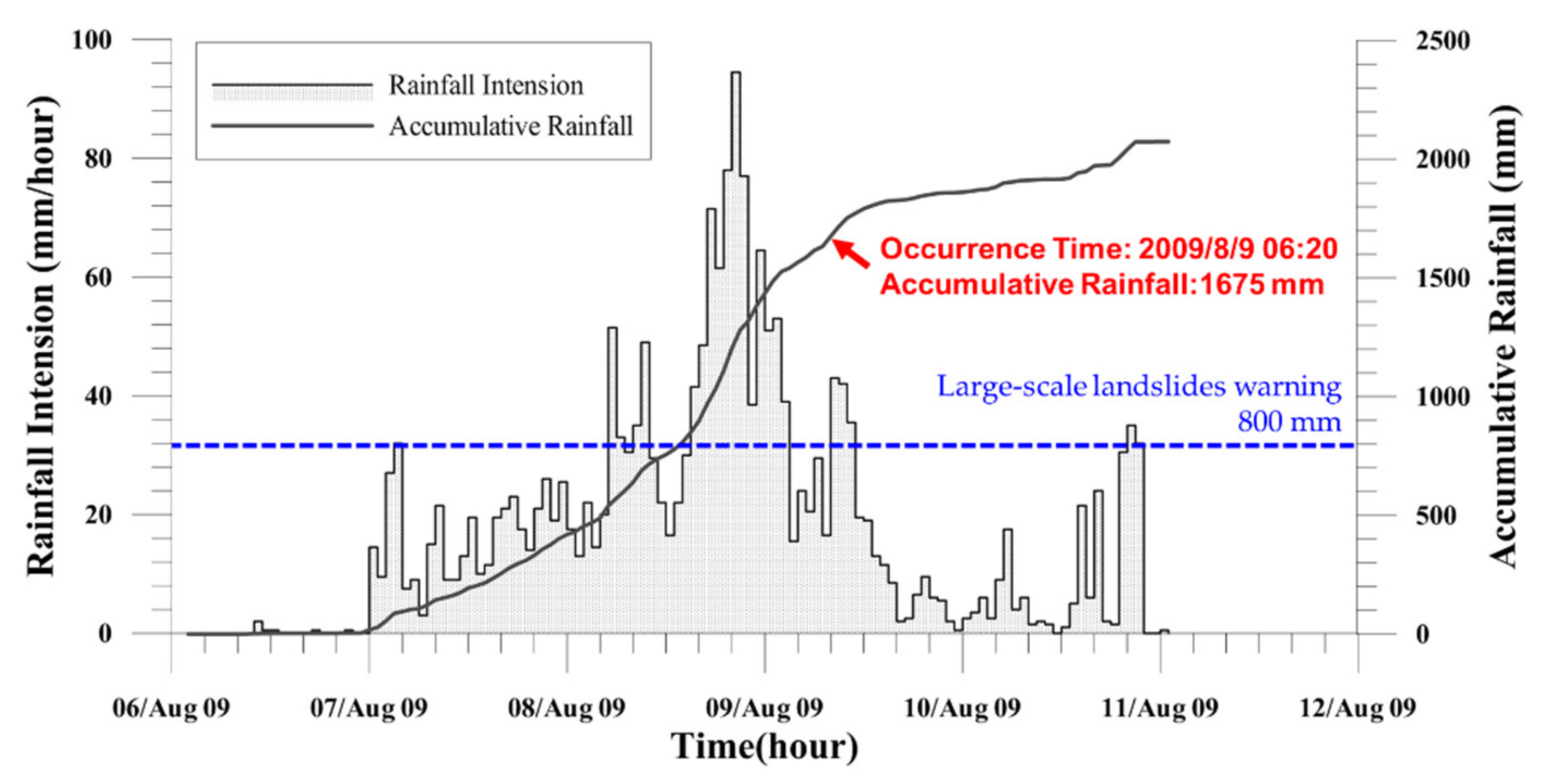
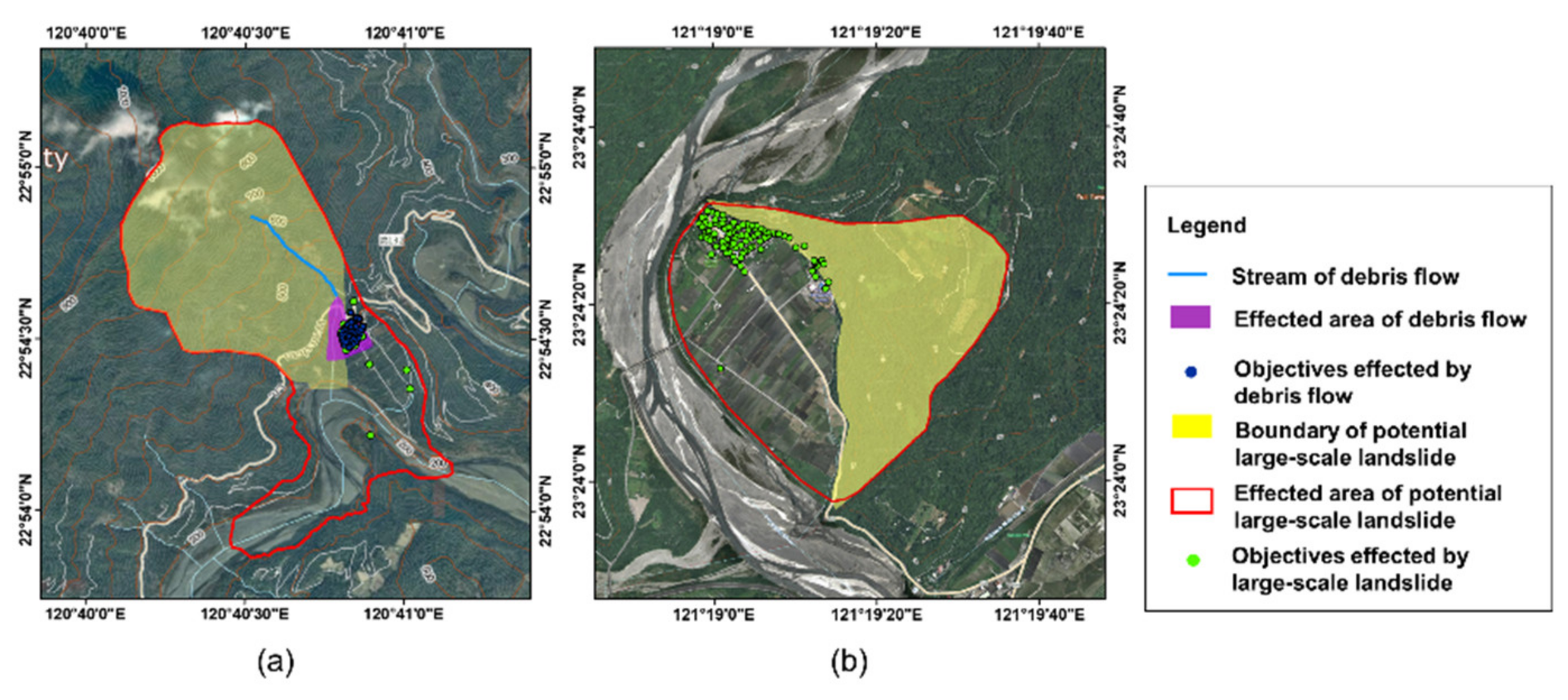
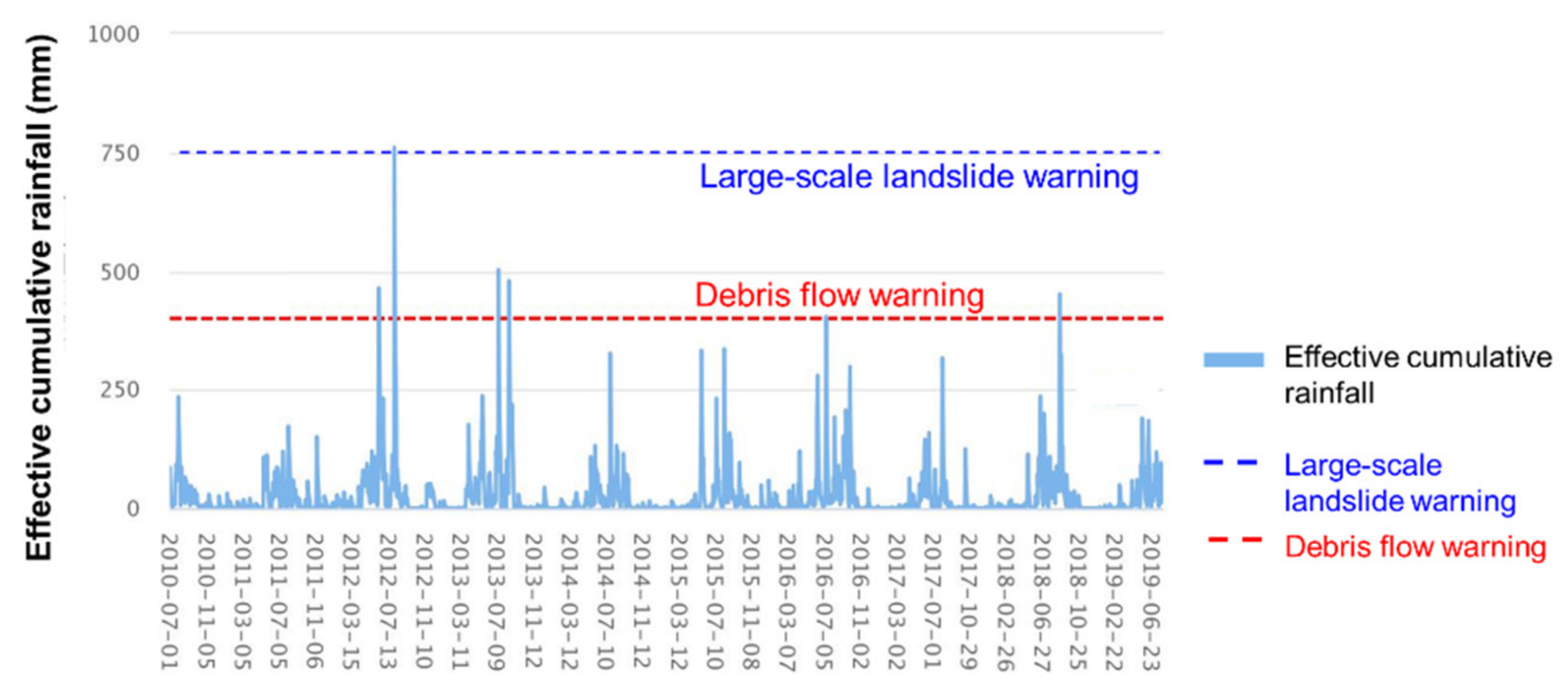

Publisher’s Note: MDPI stays neutral with regard to jurisdictional claims in published maps and institutional affiliations. |
© 2021 by the authors. Licensee MDPI, Basel, Switzerland. This article is an open access article distributed under the terms and conditions of the Creative Commons Attribution (CC BY) license (http://creativecommons.org/licenses/by/4.0/).
Share and Cite
Tsai, Y.-J.; Syu, F.-T.; Shieh, C.-L.; Chung, C.-R.; Lin, S.-S.; Yin, H.-Y. Framework of Emergency Response System for Potential Large-Scale Landslide in Taiwan. Water 2021, 13, 712. https://doi.org/10.3390/w13050712
Tsai Y-J, Syu F-T, Shieh C-L, Chung C-R, Lin S-S, Yin H-Y. Framework of Emergency Response System for Potential Large-Scale Landslide in Taiwan. Water. 2021; 13(5):712. https://doi.org/10.3390/w13050712
Chicago/Turabian StyleTsai, Yuan-Jung, Fang-Tsz Syu, Chjeng-Lun Shieh, Chi-Rong Chung, Shih-Shu Lin, and Hsiao-Yuan Yin. 2021. "Framework of Emergency Response System for Potential Large-Scale Landslide in Taiwan" Water 13, no. 5: 712. https://doi.org/10.3390/w13050712




